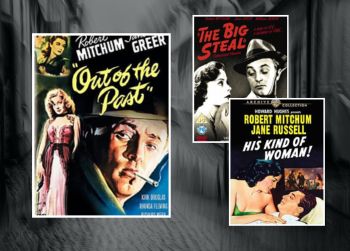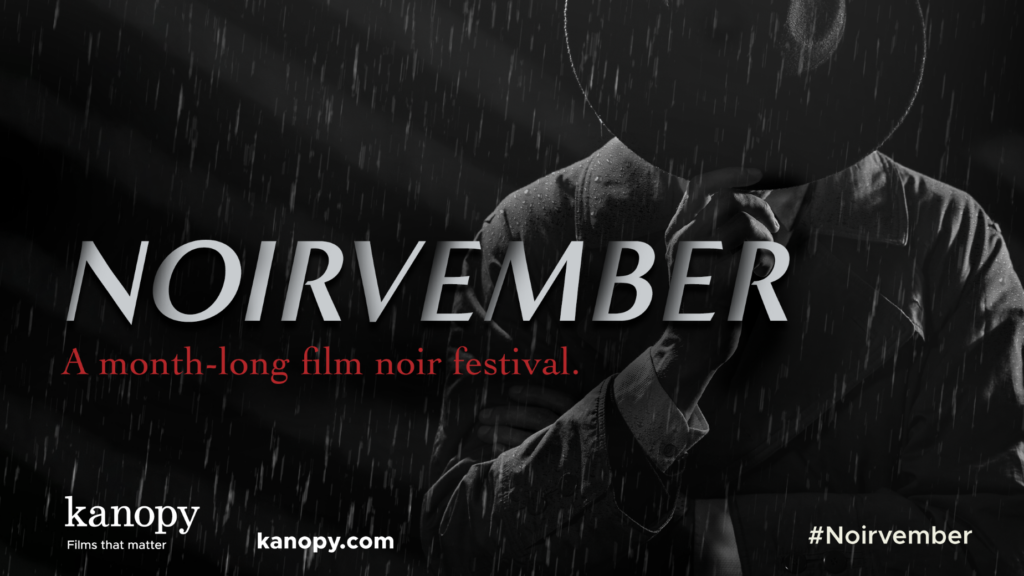Ready for cynical heroes, intricate plots, and underlying existentialism? Sounds like you’re ready to get moody with Kanopy’s Noirvember collection.
Following the end of World War Two, French publishing house Gallimard started publishing translations of American crime novels through its Série noire imprint: including authors such as Dashiell Hammett, Raymond Chandler, James M. Cain and David Goodis. The following year, French critic Nino Frank wrote the earliest essays identifying a new departure in American film making, the ‘film noir’- though the term itself did not come into ‘official’ use until the publication of Raymond Borde & Etienne Chaumeton’s study ‘Panarama du film noir americain’ in 1955, and wasn’t widely adopted in America until the 1970’s. According to Borde and Chaumeton, the ‘noir’ cycle officially begins with John Houston’s The Maltese Falcon (1941) and ends with Robert Aldrich’s Kiss Me Deadly (1955) – though the style can be traced back as far as Fritz Lang’s M (1931), and forward to films like Memento (2000).
Characterised by fear, mistrust, bleakness, paranoia, fatalism, disillusionment, existential plots and confessional voiceovers, they provided a distinctly pessimistic view of post-war America. However, while the view was American, the ‘feel’ was distinctly European with shadowy expressionistic lighting, stark and skewered camera angles, jarring editing and deep shadows. Due to this style, the best noirs are in black and white – with key European directors such as Fritz Lang, Robert Siodmak, and Jacques Tourneur. Noir protagonists were typically anti-heroes: crooked cops, down and out private eyes, war veterans, petty criminals, gamblers and killers; while the women were often unloving, mysterious, duplicitous and manipulative – but always gorgeous.
While the style dropped out of favour after the late 1950’s, its elements were present in several standout films of the 1960’s, from The Manchurian Candidate (1962) to Point Blank (1967). It made a resurgence in the 1970’s, and an even stronger one in the 1990’s. Films from this period on are referred to as ‘neo-noir’ and, while some are merely an affected stylism, enough original ‘noir’ runs through them to satisfy purists. Since then, these influential cinematic works have grown in popularity as modern filmmakers use similar aesthetics.
Whether you’re looking to dive into the dark world of the classic genre, or want to see what updates have been made to keep the concept fresh, you can explore Kanopy’s well-rounded collection here.



